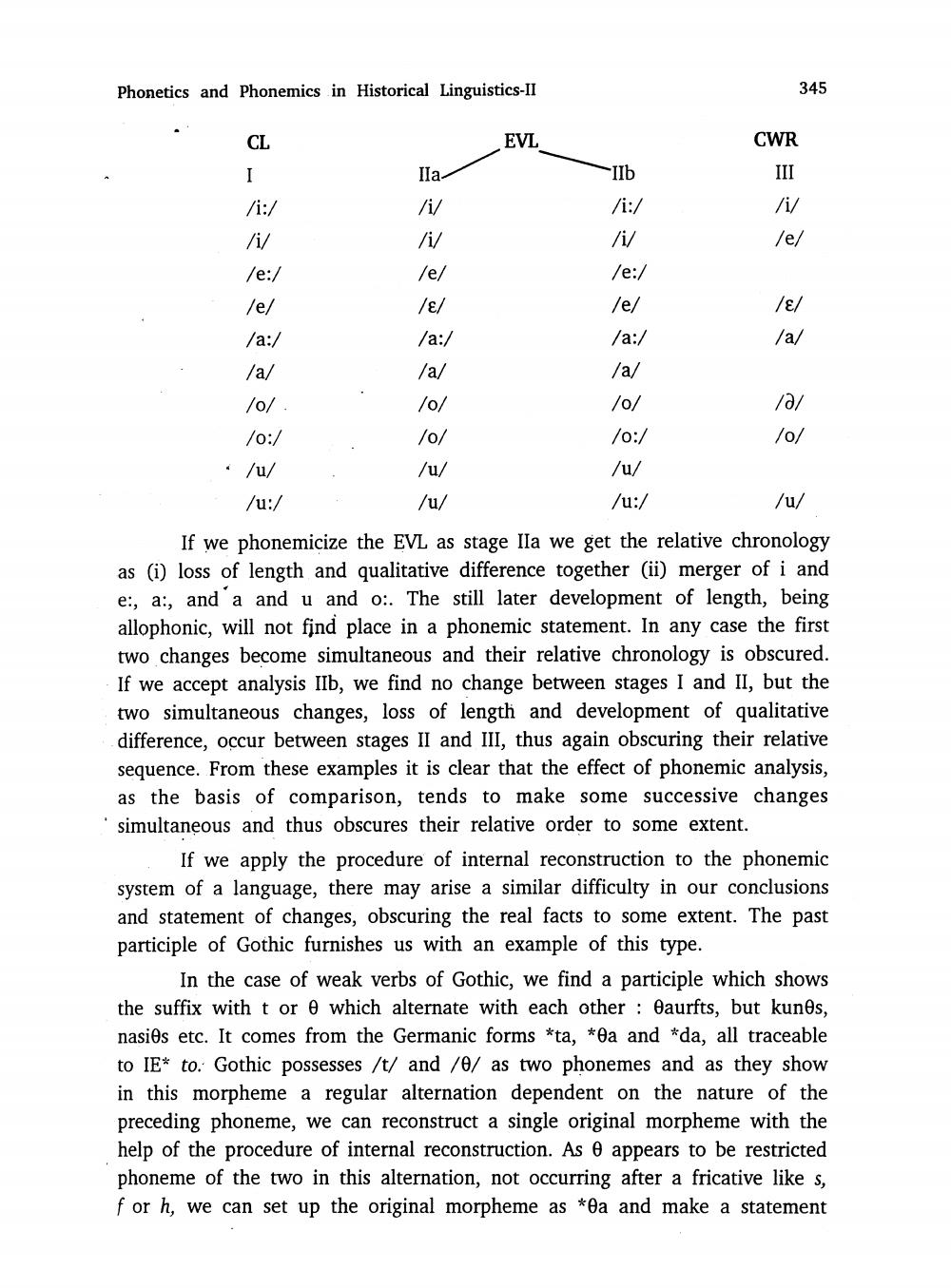________________
Phonetics and Phonemics in Historical Linguistics-II
CL
I
/i:/
/i/
/e:/
/e/
/a:/
/a/
/0/.
/0:/
/u/
/u:/
Ila
/i/
/i/
/e/
/ɛ/
/a:/
/a/
/0/
/0/
/u/
/u/
EVL
IIb
/:/
V
/e:/
/e/
/a:/
/a/
/0/
/0:/
/u/
/u:/
CWR
III
345
V
/e/
/ɛ/
/a/
/a/
/0/
/u/
If we phonemicize the EVL as stage Ila we get the relative chronology as (i) loss of length and qualitative difference together (ii) merger of i and e:, a, and a and u and o:. The still later development of length, being allophonic, will not find place in a phonemic statement. In any case the first two changes become simultaneous and their relative chronology is obscured. If we accept analysis IIb, we find no change between stages I and II, but the two simultaneous changes, loss of length and development of qualitative difference, occur between stages II and III, thus again obscuring their relative sequence. From these examples it is clear that the effect of phonemic analysis, as the basis of comparison, tends to make some successive changes simultaneous and thus obscures their relative order to some extent.
If we apply the procedure of internal reconstruction to the phonemic system of a language, there may arise a similar difficulty in our conclusions and statement of changes, obscuring the real facts to some extent. The past participle of Gothic furnishes us with an example of this type.
In the case of weak verbs of Gothic, we find a participle which shows the suffix with t or which alternate with each other: @aurfts, but kunes, nasies etc. It comes from the Germanic forms ta, ea and *da, all traceable to IE to Gothic possesses /t/ and /8/ as two phonemes and as they show in this morpheme a regular alternation dependent on the nature of the preceding phoneme, we can reconstruct a single original morpheme with the help of the procedure of internal reconstruction. As e appears to be restricted phoneme of the two in this alternation, not occurring after a fricative like s, for h, we can set up the original morpheme as ea and make a statement




